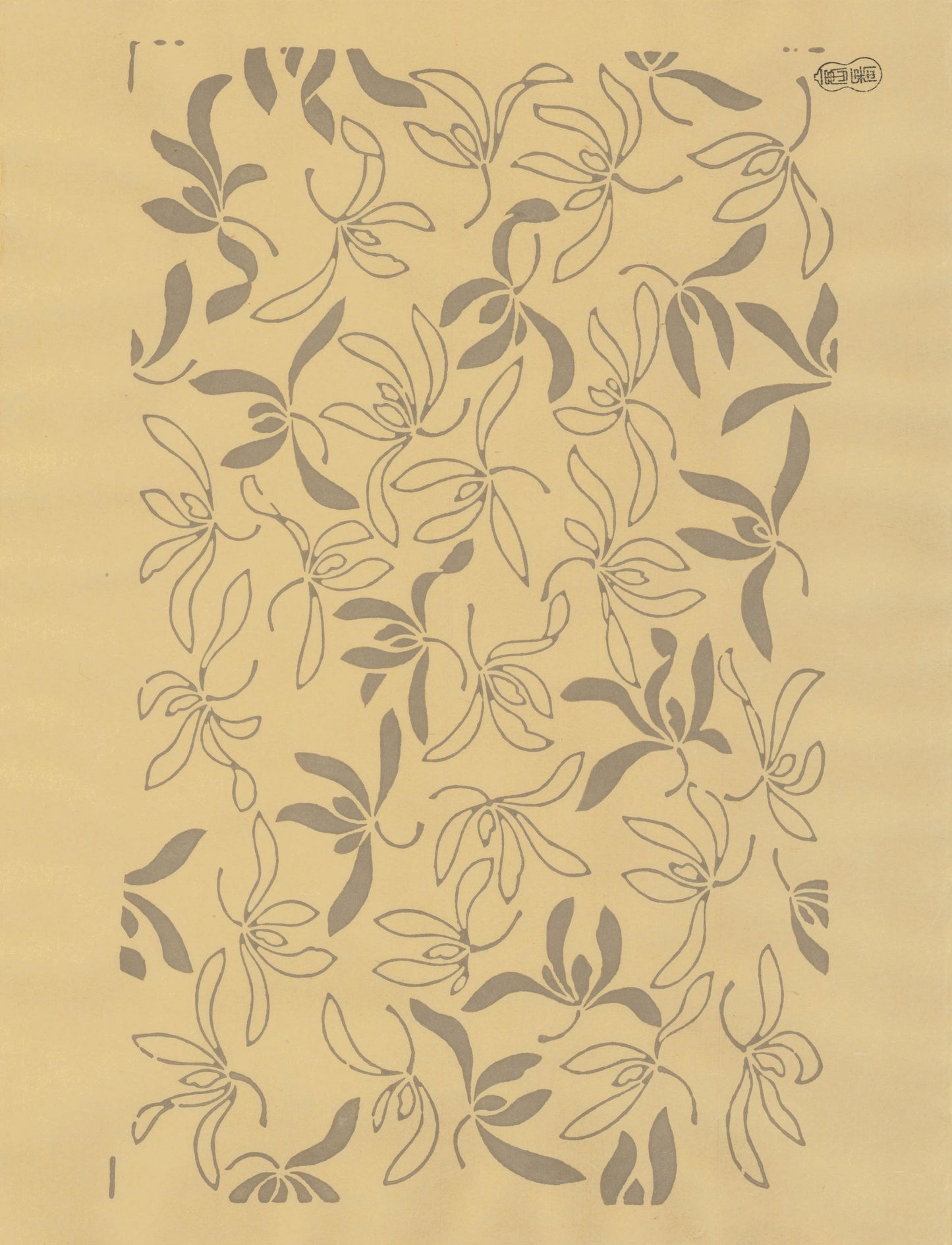Calab Rare Books
KYOKARAKAMI, [JAPANESE PATTERN PAPER
KYOKARAKAMI, [JAPANESE PATTERN PAPER
Couldn't load pickup availability
Share
Kara nagatezuri mokuhan monyo [Kara-cho Designs for Hand-Printed Woodcut Pattern Paper.] Edited by Ansou Hisao. Preface by Osaragi Jiro. Two volumes. Contents includes: 2 ff. prefaces, 102 sheets of decorated papers, printed in colours from the original woodblocks on Kurotani paper, sheet size 390 x 510 mm. Text fascicles loosely inserted in each volume (each 16 pp., with collotype illustrations; small 4to., self-wraps., secured with cord, as issued). Large folio, loose in original publisher's purple silk-covered wooden cases. Tokyo: [Bijutsu Shuppan-sha], 1966-1967.
One of 120 copies. A special publication reproducing kyokarakami (hand-printed woodcut pattern paper) from actual woodblock specimens from the firm Karacho, the oldest surviving studio producing these papers by hand. Founded in Kyoto in the early seventeenth century, Karacho filled the tremendous demand during the beginning of the Edo period to decorate paper doors (fusuma), walls, ceilings and folding screens, in temples, imperial villas (as at Katsura) and grand private residences. By the 1830s, thirteen studios were in operation in Kyoto; today, all of them, except Karacho, have disappeared. Karacho preserves more than 600 original woodblocks in its inventory. Of these, some 250 were made in the Edo period after 1789, following a disastrous fire in Kyoto; 200 others date from the Meiji period after 1867, and 150 from the Taisho period, after 1912.
This substantial collection presents a selection of the best designs. The sheets are printed on Kuratani (luxurious imported paper) manufactured especially for this publication, and the designs are realized using rare natural materials, such as powdered oyster shell and mica, gold, lacquer, and gouaches derived from natural plants. On account of the fragile nature of the original blocks, many of which have since been withdrawn from use, this publication will never be reprinted. This set of papers, made by Karacho, represent one of the most important source books of Japanese classical design in Kyoto. Some wear to the cases, the papers remain in fine fresh condition.
A complete list describing each paper design is available upon request











